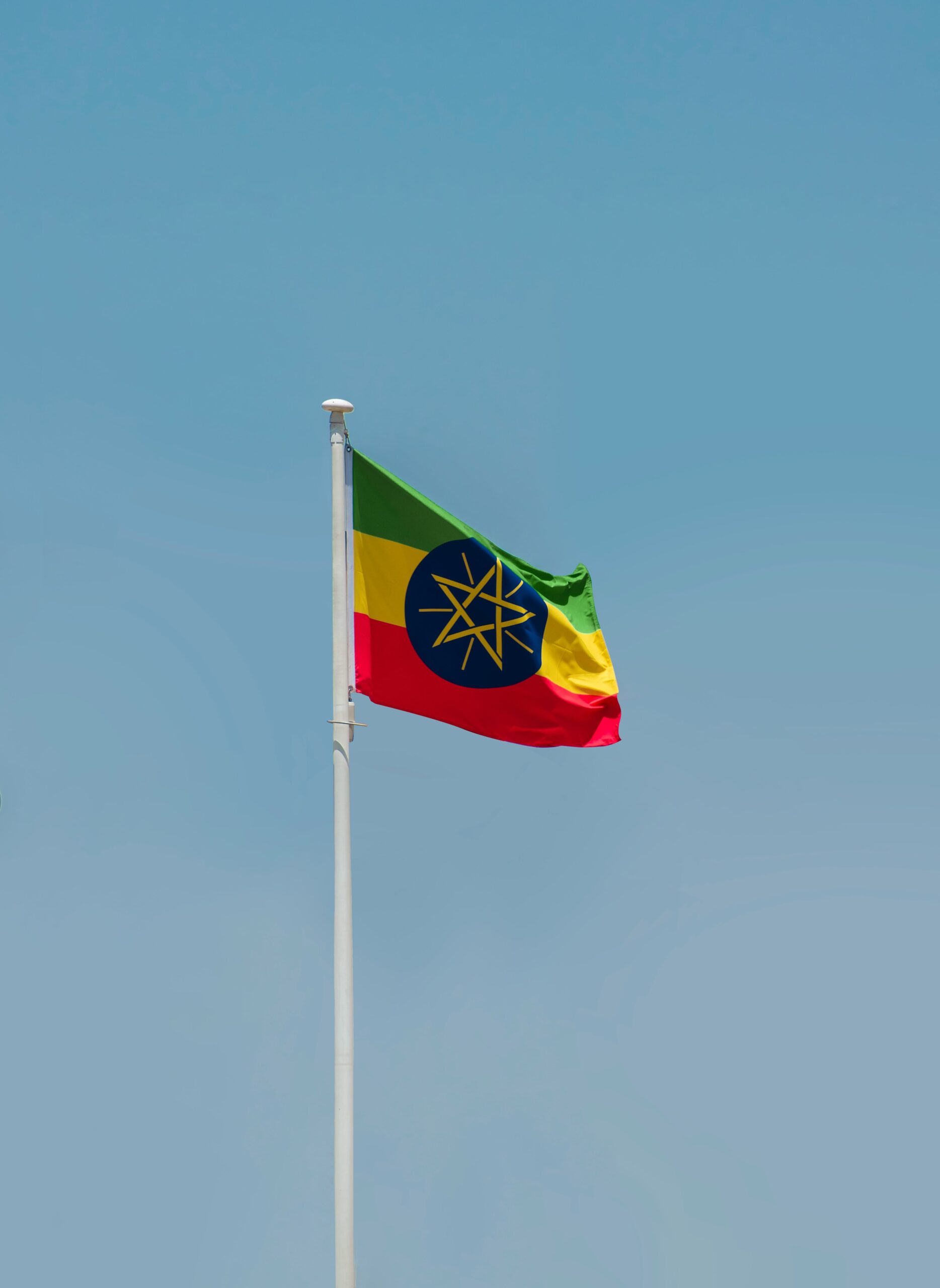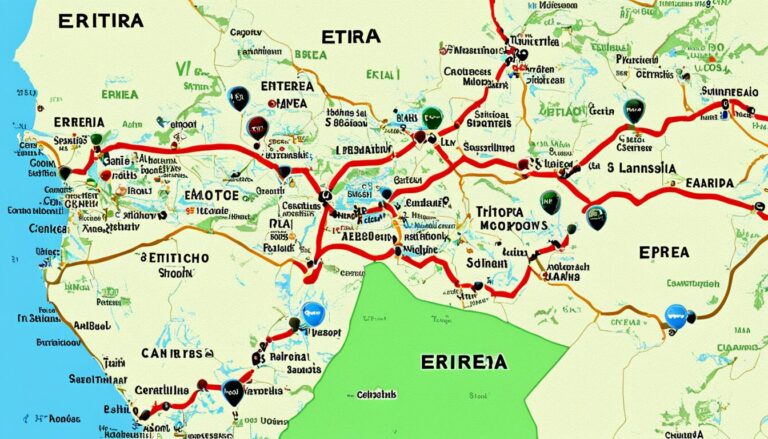What Is The Wildlife Like In Ethiopia?
Overview of the Wildlife in Ethiopia
Ethiopia, located in the Horn of Africa, is a country known for its incredible biodiversity and unique wildlife. The diverse landscapes, ranging from highlands to savannas to deserts, provide a wide range of habitats for various species to thrive. The wildlife in Ethiopia is a mix of endemic species found nowhere else on the planet and iconic African animals that draw visitors from around the world.
One of the most notable aspects of Ethiopia’s wildlife is its endemic species. The country is home to various unique animals, such as the Ethiopian wolf, Walia ibex, and the Gelada baboon. The Ethiopian wolf, also known as the Simien fox, is one of the rarest canids in the world and is found in the Ethiopian highlands. The Walia ibex, a type of wild goat, inhabits the steep cliffs of the Simien Mountains. The Gelada baboon, with its distinctive red chest patch, roams the grasslands of the Ethiopian plateau.
In addition to the endemic species, Ethiopia is also home to a wide range of other wildlife. National parks and wildlife reserves across the country protect species such as elephants, lions, leopards, zebras, and giraffes. The Bale Mountains National Park, Simien Mountains National Park, and Omo National Park are just a few examples of protected areas where visitors can experience Ethiopia’s diverse wildlife in their natural habitats.
Despite the rich biodiversity, Ethiopian wildlife faces various threats, including habitat loss, poaching, and climate change. Conservation efforts are underway to protect endangered species and their habitats. Organizations like the Ethiopian Wildlife Conservation Authority work to safeguard wildlife and promote sustainable practices to ensure the long-term survival of Ethiopia’s unique flora and fauna.
The wildlife in Ethiopia is diverse and extraordinary, with a mix of endemic species and iconic African animals. Conservation efforts play a crucial role in preserving the country’s biodiversity for future generations to enjoy. Visitors to Ethiopia have the opportunity to witness these incredible animals in their natural habitats, making it a truly exceptional destination for wildlife enthusiasts.
Endemic Species Found in Ethiopia
Ethiopia is known for its remarkable biodiversity, boasting a wide range of endemic species that are found nowhere else in the world. The country’s diverse landscapes, which include high mountains, lush forests, and vast savannas, provide a variety of habitats for unique wildlife to thrive. From rare mammals to colorful birds, Ethiopia’s endemic species offer a glimpse into the country’s rich natural heritage.
One of the most iconic endemic species in Ethiopia is the Ethiopian wolf (Canis simensis), also known as the Simien fox. This strikingly beautiful canid is Africa’s most endangered carnivore and is found in the Afro-alpine regions of the Ethiopian Highlands. With its reddish coat and distinctive white markings, the Ethiopian wolf is a symbol of the country’s efforts to preserve its native biodiversity.
Another notable endemic species is the Walia ibex (Capra walie), a rugged mountain goat species that inhabits the steep cliffs of the Simien Mountains. With its long, curved horns and thick coat, the Walia ibex is well adapted to its challenging alpine environment. Conservation efforts have helped stabilize its population, but the species remains vulnerable due to habitat loss and poaching.
Ethiopia is also home to a variety of endemic bird species, making it a paradise for birdwatchers. The endemic yellow-throated seedeater (Serinus flavigula) and the mysterious Nechisar nightjar (Caprimulgus solala) are just a few examples of the avian diversity found in the country. Bird enthusiasts flock to Ethiopia to catch a glimpse of these rare and elusive species in their natural habitats.
In addition to mammals and birds, Ethiopia’s endemic species also include unique plants, reptiles, and amphibians. The Ethiopian Highlands are known for their rich plant diversity, with many species found only in this region. The critically endangered Ethiopian hedgehog (Paraechinus aethiopicus) and the vibrant Ethiopian mountain adder (Bitis parviocula) are examples of the country’s endemic reptiles that face threats from habitat destruction and human encroachment.
Ethiopia’s endemic species reflect the country’s status as a biodiversity hotspot and underscore the importance of conservation efforts to protect its unique wildlife. By safeguarding these extraordinary animals and their habitats, Ethiopia can ensure a sustainable future for its natural heritage for generations to come.
Conservation Efforts for Ethiopian Wildlife
Ethiopia is a country known for its rich biodiversity and unique wildlife species. To preserve and protect these valuable resources, various conservation efforts have been implemented by the government, non-profit organizations, and local communities. These initiatives aim to safeguard the natural habitat of wildlife, prevent poaching, and promote sustainable practices for the coexistence of humans and animals.
One of the key conservation efforts in Ethiopia is the establishment of national parks and wildlife reserves. These protected areas serve as sanctuaries for endangered species such as the Ethiopian wolf, Walia ibex, and Mountain Nyala. Simien Mountains National Park, Bale Mountains National Park, and Omo National Park are among the most prominent reserves that contribute significantly to the conservation of Ethiopia’s wildlife.
In addition to protected areas, community-based conservation projects have also played a crucial role in wildlife preservation. By involving local communities in conservation activities, such as ecotourism initiatives and sustainable agricultural practices, these projects aim to reduce human-wildlife conflicts and raise awareness about the importance of protecting natural ecosystems.
Furthermore, government regulations and laws have been put in place to combat illegal wildlife trade and poaching. The Ethiopian Wildlife Conservation Authority (EWCA) oversees wildlife protection efforts and works in collaboration with international conservation organizations to enforce wildlife protection laws and ensure the survival of endangered species.
Education and awareness programs are another essential aspect of conservation efforts in Ethiopia. By educating the public, especially the younger generation, about the significance of biodiversity and the importance of preserving wildlife, these programs aim to instill a sense of responsibility and stewardship towards the environment.
The conservation efforts for Ethiopian wildlife are multi-faceted and require collaboration among government agencies, non-profit organizations, local communities, and international partners. Through these collective efforts, Ethiopia can continue to protect its unique wildlife and ensure a sustainable future for both its natural heritage and its people.
Popular National Parks and Wildlife Reserves in Ethiopia
When it comes to wildlife diversity, Ethiopia boasts an array of national parks and wildlife reserves that are home to a wide variety of species, making it a paradise for nature lovers and wildlife enthusiasts. These protected areas play a crucial role in conserving the country’s rich biodiversity while offering visitors a chance to experience the beauty of Ethiopia’s natural landscapes up close.
One of the most renowned national parks in Ethiopia is the Simien Mountains National Park, a UNESCO World Heritage Site known for its breathtaking scenery and unique wildlife. Here, visitors can spot charismatic species such as the Ethiopian wolf, Walia ibex, and Gelada baboon, all of which are endemic to the region. The park’s rugged terrain, soaring peaks, and deep valleys provide a spectacular backdrop for wildlife viewing and outdoor activities such as hiking and birdwatching.
Another must-visit destination for wildlife enthusiasts is the Bale Mountains National Park, located in southeastern Ethiopia. This park is home to the endemic Mountain nyala, Menelik’s bushbuck, and Bale monkey, as well as a variety of bird species, including the iconic Ethiopian wolf. Visitors to the Bale Mountains can explore the park’s diverse ecosystems, from afro-alpine moorlands to cloud forests, and witness the unique flora and fauna that thrive in this remote wilderness.
In addition to national parks, Ethiopia also boasts several wildlife reserves that offer unique safari experiences. The Omo National Park, located in the southwest of the country, is known for its population of large mammals such as elephants, buffalo, and various antelope species. Visitors to the Omo National Park can embark on guided game drives, boat safaris, and cultural tours to discover the rich biodiversity and cultural heritage of the region.
Furthermore, the Awash National Park, one of the oldest and most established parks in Ethiopia, is a popular destination for wildlife watching. Here, visitors can spot a variety of wildlife, including Beisa oryx, Soemmering’s gazelle, and the endangered Grevy’s zebra. The park is also home to the scenic Awash Falls and the dormant Fantale volcano, offering visitors a chance to explore both natural and geological wonders in one location.
Ethiopia’s national parks and wildlife reserves are a testament to the country’s commitment to preserving its natural heritage for future generations. By visiting these protected areas, travelers not only have the opportunity to witness some of Africa’s most unique and endangered species but also contribute to the conservation efforts that are essential for safeguarding Ethiopia’s wildlife for years to come.
Overview of the Wildlife in Ethiopia
Ethiopia, a country known for its diverse landscapes and rich cultural heritage, is also home to a wide variety of wildlife. The wildlife in Ethiopia is incredibly diverse, with many unique species found nowhere else on Earth. From the lush forests of the highlands to the arid savannas of the lowlands, Ethiopia’s ecosystems support a wide range of flora and fauna. Some of the most iconic wildlife species found in Ethiopia include the Ethiopian wolf, gelada baboon, mountain nyala, and the Walia ibex.
One of the most fascinating aspects of Ethiopia’s wildlife is the presence of endemic species. These are species that are unique to a specific region and are not found anywhere else in the world. Ethiopia is home to several endemic species, including the Gelada baboon, a primate known for its distinctive red chest patch and unique social behaviors. Another notable endemic species is the Ethiopian wolf, which is Africa’s most endangered carnivore and is found in the country’s highlands.
Ethiopia has made significant efforts to conserve its wildlife and protect its natural habitats. The Ethiopian Wildlife Conservation Authority (EWCA) plays a crucial role in overseeing conservation efforts across the country. Various national parks and wildlife reserves have been established to safeguard the diverse ecosystems and protect endangered species. These protected areas not only serve as vital habitats for wildlife but also attract tourists from around the world, contributing to the country’s economy.
Some of the popular national parks and wildlife reserves in Ethiopia include the Simien Mountains National Park, Bale Mountains National Park, and the Omo National Park. These protected areas offer visitors the opportunity to see a wide range of wildlife in their natural habitats, from rare bird species to large mammals like elephants and lions. The Bale Mountains National Park, for example, is known for its diverse birdlife and is home to the endemic Mountain Nyala.
Despite conservation efforts, wildlife in Ethiopia faces various threats, including habitat loss, poaching, climate change, and human-wildlife conflict. Deforestation, driven by agricultural expansion and logging, is a significant threat to many species’ survival. Poaching for bushmeat and illegal wildlife trade also pose serious risks to the country’s wildlife populations. Climate change is altering ecosystems and affecting wildlife habitats, leading to disruptions in food chains and species distribution.
Ethiopia’s wildlife is a vital aspect of the country’s natural heritage and a key attraction for tourists. The presence of endemic species, conservation efforts, and popular national parks highlight the importance of protecting Ethiopia’s biodiversity. Despite facing numerous threats, ongoing conservation initiatives and public awareness campaigns are crucial for safeguarding the country’s remarkable wildlife for future generations.
Conclusion
Ethiopia boasts a rich and diverse wildlife that is both unique and captivating. The country is home to a wide array of endemic species, making it a must-visit destination for nature enthusiasts and wildlife lovers. With concerted conservation efforts in place, Ethiopian wildlife is gradually being safeguarded for future generations to enjoy. The national parks and wildlife reserves in the country offer unparalleled opportunities to witness diverse ecosystems and to observe magnificent wildlife in their natural habitats.
Despite the myriad of threats facing wildlife in Ethiopia, including habitat loss, poaching, and climate change, ongoing conservation initiatives are striving to mitigate these challenges and protect the country’s natural heritage. By raising awareness, implementing sustainable practices, and engaging local communities in conservation efforts, Ethiopia is making significant strides towards preserving its unique flora and fauna for generations to come.
Visiting popular national parks such as Simien Mountains National Park, Bale Mountains National Park, and Omo National Park provides a glimpse into the stunning landscapes and remarkable wildlife that call Ethiopia home. From the graceful Ethiopian wolves and Gelada baboons to the majestic Walia ibex and rare African bush elephants, these parks offer unforgettable wildlife experiences that showcase the country’s natural beauty and biodiversity.
Ethiopia’s endemic species, such as the critically endangered Ethiopian wolf and the rare Mountain nyala, are emblematic of the country’s exceptional biological diversity. These species serve as ambassadors for Ethiopia’s unique wildlife and underscore the importance of conservation efforts to ensure their survival. By protecting their habitats and addressing key threats, Ethiopia is working towards securing a sustainable future for its precious wildlife.
Conservation efforts in Ethiopia are supported by a range of organizations, government agencies, and local communities dedicated to preserving the country’s natural heritage. Through initiatives such as habitat restoration, anti-poaching measures, and community-based conservation projects, Ethiopia is fostering a culture of environmental stewardship and biodiversity conservation. By addressing the root causes of wildlife decline and promoting sustainable practices, these efforts are crucial for safeguarding Ethiopia’s iconic species and ecosystems.
The wildlife in Ethiopia is a treasure trove of biodiversity and a testament to the country’s natural splendor. By focusing on conservation, raising awareness, and promoting sustainable practices, Ethiopia is taking significant steps towards protecting its unique wildlife for future generations to cherish. With its spectacular national parks, endemic species, and dedicated conservation efforts, Ethiopia offers a glimpse into a world teeming with natural wonders and untamed beauty.







